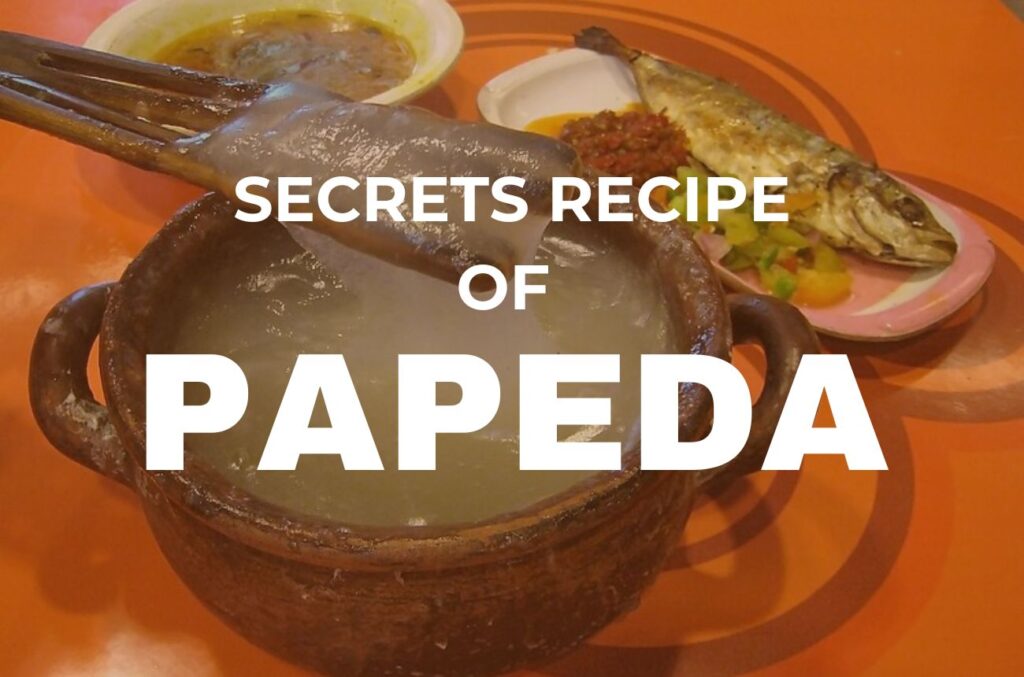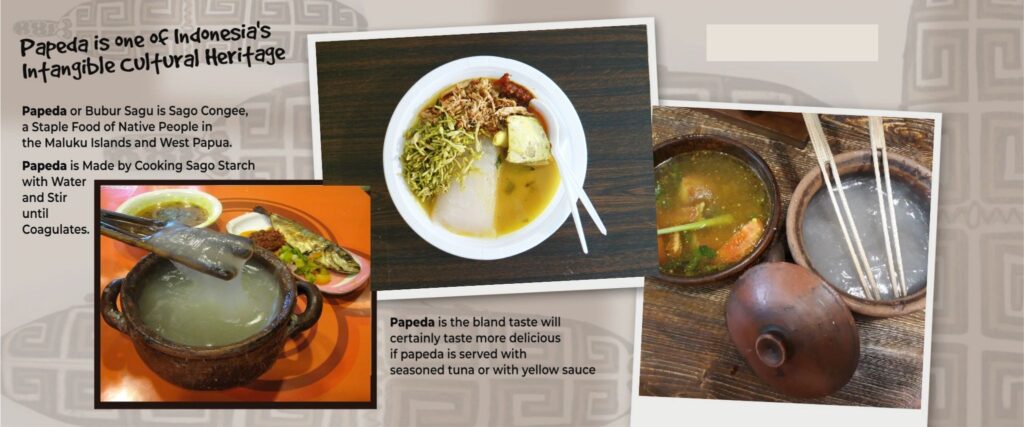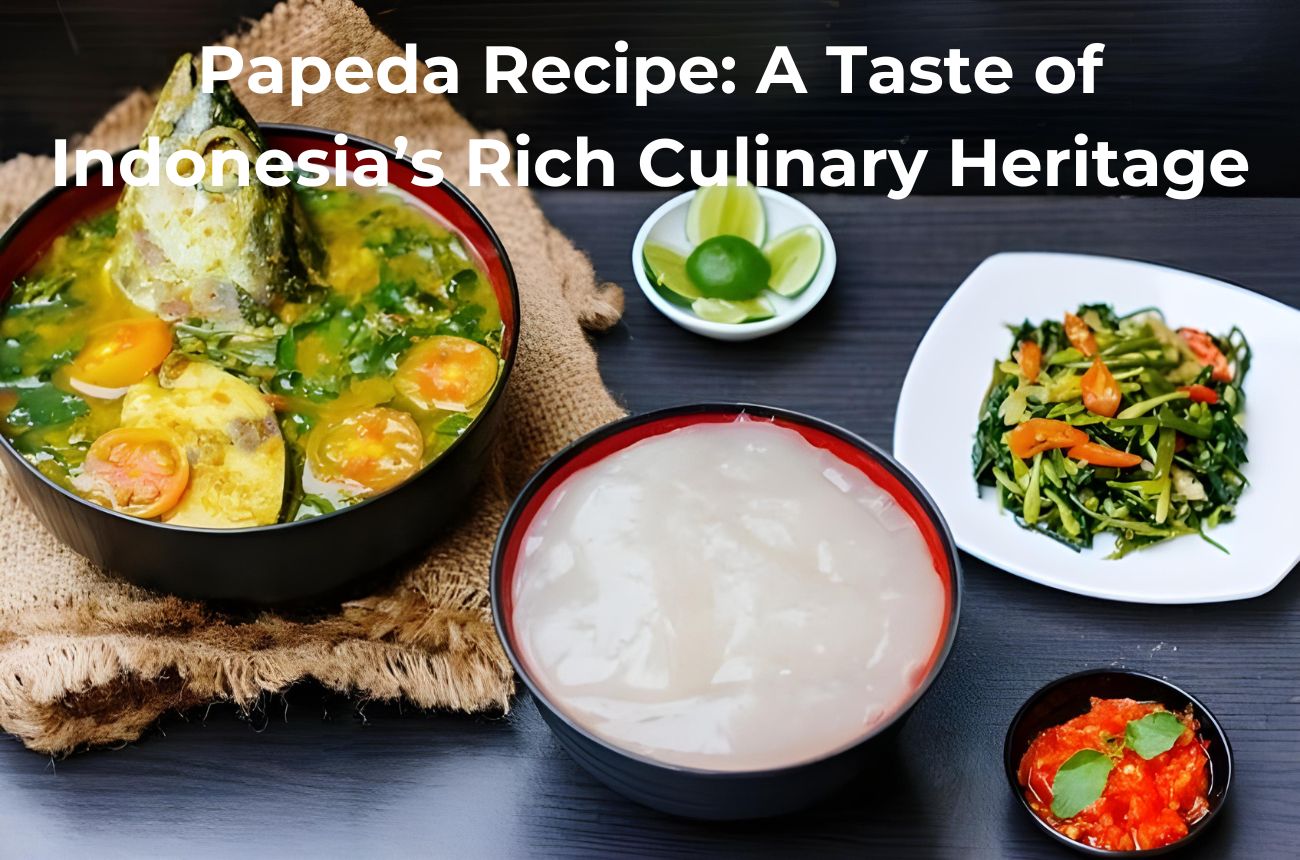Indonesia’s Maluku Islands regularly eat Papeda, a special starchy mixture in their diet. This specific food item contains a starch named sago flour, which does not have a protein called gluten that is got from sago palm pith. Normally papeda is served with fish soup, this dish is notoriously sticky and rubbery in texture hence has to be eaten in a peculiar manner. For it is worthwhile as the result is super tasty Indonesian food.
Understanding Sago Flour: The Heart of Papeda
Papeda is made using Sago flour as the main ingredient, which is a very soft dough. Sago flour, a starch extracted from the pith of the sago palm tree, is a widely used starch in South-East-Asia; it has no flavour as opposed to wheat flour so it depends on other flavours which can be added to become the taste of plain dishes; nonetheless it has great properties when it comes to making papeda; in that it forms a stick-like and rubbery dough once heated with water.
Finding sago flour might require a visit to an Asian grocery store or ordering online. If unavailable, potato flour can be used as a substitute, though it may not achieve the same level of stretchiness.
Unveiling the Secrets of Papeda Preparation:

Here’s a detailed breakdown of how to create this intriguing dish:
Ingredients:
For the Papeda:
2 cups sago flour (or potato flour as a substitute)
4 cups water
Pinch of salt
For the Fish Soup ( kuah kuning):
1 tbsp vegetable oil
1 medium onion, chopped
2 cloves garlic, minced
1 stalk lemongrass, white part only, chopped
1 inch ginger, peeled and minced
2 tsp turmeric powder
1 tsp ground coriander
1/2 tsp ground cumin
1/2 tsp chilli powder (adjust to your spice preference)
4 cups water
1 lb firm white fish, cut into bite-sized pieces (such as cod, snapper, or halibut)
1-2 whole bird’s eye chilies (optional)
1 cup chopped fresh kangkung (water spinach) or spinach
Salt to taste
Instructions:
Preparing the Fish Soup: In the pot that you have heated with oil on medium heat, cook the onion, garlic, lemongrass and ginger for 5 minutes. Add turmeric, coriander, cumin and chilli powder; then let everything fry for a couple of more minutes so as to give off nice smells.
Building the Flavor: Add some water and heat it until it bubbles before simmering at a low temperature over a period of five minutes; then add the fish so that it can cook slowly for around twenty minutes until done after which some salt may be sprinkled on top of them followed by optional bird eye chillies if you like your food hot.
Cooking the Papeda: In another pot, mix sago flour with a pinch of salt using cold water to make a paste. Add all remaining water while stirring all around to avoid any lumps.
Reaching the Perfect Consistency: Put about water in the pot and wait till it boils. And then slowly add the sago mixture to the boiling water while stirring to avoid coagulation. Reduce the heat, keep on stirring vigorously for 5 to 7 minutes until the blend is consistent and clear. The mixture should be smooth and elastic with a bit of a pull when stirred.
Serving Up a Delightful Experience: Papeda can be enjoyed in two ways. The traditional way is to spin it round a stick made out of wood before dipping the article in a soup containing fish or other forms of marine life. Another method is to wet your palms when forming small spheres from it, then place them into the broth.
Tips for Success:
- To prevent the papeda from sticking, use a wooden spoon in stirring it.
- If you find the mixture is becoming too thick, you can add a little bit more hot water while constantly stirring.
- You can prepare the fish soup beforehand and reheat it before serving together with fresh papeda.
- Try out a range of eco-friendly plastic products like paper cups, plates or pots.
Beyond the Plate: The Cultural Significance of Papeda

Papeda goes way beyond being a meal; it represents Maluku’s culture. This is connected with the people’s lives and the sago palm, which is highly essential to them. Processing and collecting sago brings people together thereby strengthening their relationships. However, its consumption is regarded as a means through which people come together, sometimes done in the company of those close such as family members.
Next time you want a thrilling culinary adventure; try cooking papeda which is a special food loved by many while appreciating the cultural importance Indonesians attach to it.





2 thoughts on “Papeda Recipe: A Taste of Indonesia’s Rich Culinary Heritage”
Comments are closed.